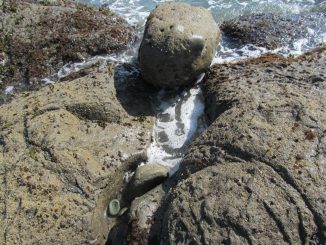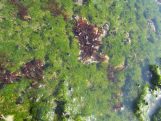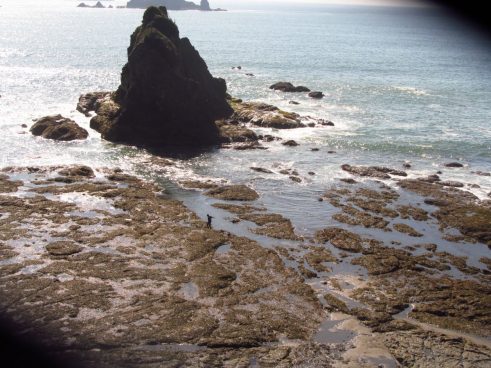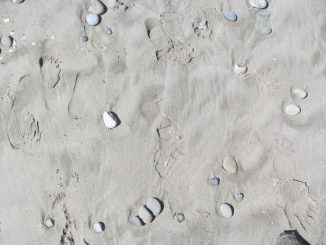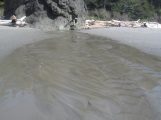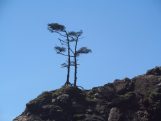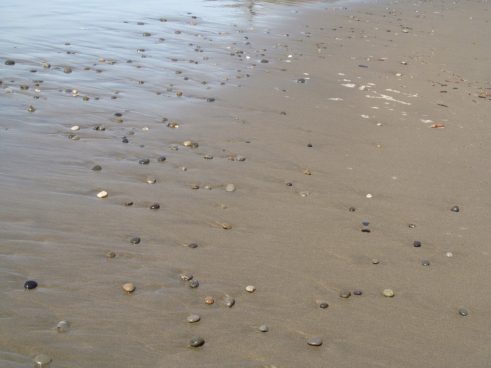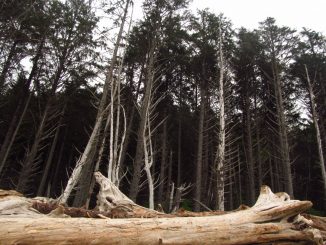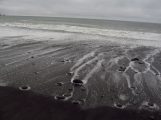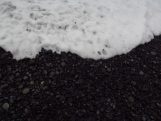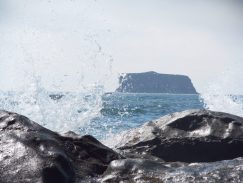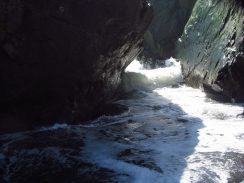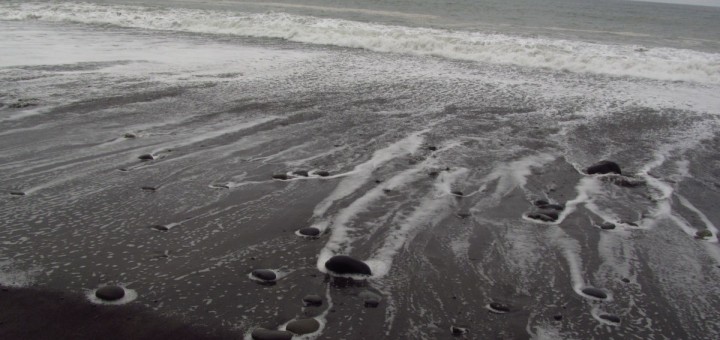
Collaborative group summary:
In an effort to represent our sense of place along the Olympic Coast as a group, we were drawn toward the powerful forces of the ocean. Dynamic movement and change caused by the waves affected not only the smaller ecosystems we found along the beach but toward us as a group as well. The feeling of movement and change within the environment affected our sense of place in many different ways… it’s almost as if we are in a similar competitive environment as in the tight quarters of a tide pool. The waves affect our place just as much as the enemy’s competitive space. We’re fighting just as much to hold on, knowing that we have no control, but hoping we can adapt.
-Sequoia Meyer, Kaitlyn Estep, Chloe Cane, and Amanda Pratt, AKA Bodacious Bombastic Banana Slugs
Tide Pools:
The tide pools are are a community of different organisms. Looking at the creatures that live there was the first time I felt as if I was invading something’s place, when I truly became aware of my impact and the hostility I create. On the beach I felt small, as if I was in this vast, never ending space. At the tide pools one has to look down into, to see what is really going on, one has to walk on their homes.
There are snails, mussels, seaweed, crustaceans all layered on top of the rocks, with many more diverse creatures living within the tide pools. I was afraid to step anywhere: there was a popping noise from the seaweed, and the crunch of the crustaceans underneath; not to mention a danger of slipping and getting wet.
There are moments when the tide seems subdued by the tide pools, granted this may be because it was getting to be low tide.
The cavities between the rocks at the tide pools seem perfectly placed to capture the water from the erratic waves.
Second Beach:
I was struck by the rocks along the coast of Second Beach. It is a predominantly sandy beach, but there are sporadic rocks, that are, seemingly, evenly placed. These rocks are bigger than pebbles, but not monstrous and heavy. As well as smooth, these rocks are round and vary slightly in shape and color. I saw a sense of movement in these rocks, though I did not visually see them move. The indentation in the dirt implied that they came from the ocean, and are racing each other towards the forest, or running away.
The stacks at second Beach are one of the most prominent features. There are many of them, some close enough to touch, others are so far out, they can hardly be seen. This is an example of how much change has happened, and is happening to this beach. Many of the stacks still have growth on top, some even have small forests. They look like floating islands, though too dangerous to get to; it is as if mother nature is taunting us, proving that she is in control.
The driftwood at the end of the path in the woods was an unwelcoming entrance to the beach, nature’s way of saying keep out?
The movement of water, it is interesting how the waves of a stream interact with that of the ocean. The ocean proves its strength by overpowering the ripples of the stream.
Rialto Beach:
The forest behind the shore of Rialto beach is lined with snags and driftwood; eerily resembling skeletal remains, a boneyard of sorts. Which to say is true, what lies there is what used to be alive, yet is now dead. It brings a sense of impending doom, a feeling of being unsafe. This is a bit telling, because in the future, the land will have eroded away; more things will be lost to the sea. With that idea itself, to me this is a hostile environment.
The waves on Rialto Beach leave behind a thick trail of foam as the tide goes in. The foam quickly disappears, but watching it, there is a sense of movement revealed by the rocks. Similar to Second Beach, the ocean leaves an indentation in the sand, where it eroded parts away. This resembles a path; and because the tide comes and goes seemingly quickly, the rocks look like they are running away from the beach. The ocean itself is doing its best to hold onto the rocks.
Rialto Beach felt like a journey as opposed to a destination. The long, narrow landscape felt like a path, especially considering on one side was the hostile ocean and the other was the unwelcoming forest. The only way to go, besides back, was along the beach.The waves at Rialto Beach are thunderous. The first thing I noticed before I had even seen the water was how much the noise reminded me of lightning, loud and constant. They are also daunting to look at, and very sneaky. I have been warned many of times as a child not to get too far deep into the ocean water, or I would be swept out to sea. I tried studying the waves, see when it was safe to go in, take a picture, and get out, all without getting wet. This was useless, I got wet within the first half hour of being there. Once I was trapped, I truly realized how strong the tide is; to try and take a step while stuck in a moving tide was a bit unruly, I found it best to wait while the tide went back in; once the water has you, it takes a hold, and then you are trapped under its control. It is a bit hostile in that way.
Place Thoughts:
The coast is considered a place for some, but it probably depends on the beach. I wonder if the idea of a place is good enough to call it one’s own; does one simply liking the beach and nature mean it automatically becomes a place for them? Or perhaps familiarity is enough, 2nd Beach felt much more welcoming, on the grounds that it was familiar (even though I have never been there before).
It becomes more complicated when you take space into consideration. The beach is an ever changing space, the tide alone controls how much dry land is available. My experience in all three locations involved cowering away from the ocean at one point or another: running away from the sleeper waves, or hugging my camera to my chest so it would not get sprayed at the tide pool.
